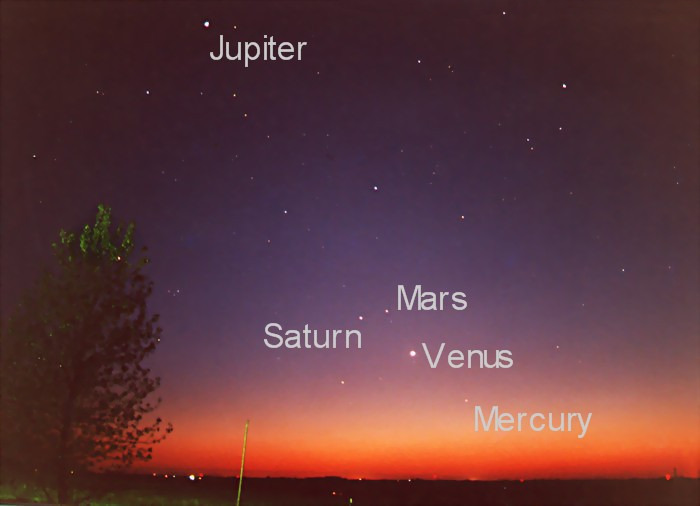Author Archive
 No Podcasts
No Podcasts
In case you hadn’t noticed, I’m suspending podcasting for a while. If I hear an outcry I may bring it back, but until then you’ll have to call the planetarium hotline for your audio fix: 206-443-2920.
Note: this is NOT the same audio as AstroInfo, and it’s updated less often, but it’s something!
 A List of Dwarf Planets
A List of Dwarf Planets
Updated September 18, 2008
Haumea:
Diameter: 1,320-1,550 km
Orbit Radius: 35.161-51.525 AU
Moons: Hi’iaka and Namaka
Composition: almost all rock
Discovered: 2003 Mike Brown, Chad Trujillo, and David Rabinowitz or Francisco José Aceituno Castro, Pablo Santos-Sanz, and Jose-Luis Ortiz
Resource: http://www.planetary.org/blog/article/00001649/, http://web.gps.caltech.edu/~mbrown/2003EL61/
Other Classifications: Plutoids, Trans-Neptunian Object, Kuiper Belt Object
Make-make:
Diameter: 1,600 km
Orbit Radius: 38.666-52.809 AU
Moons: ?
Composition: ?
Discovered: 2005 Mike Brown, Chad Trujillo, and David Rabinowitz
Resource: http://www.planetary.org/blog/article/00001553,
http://www.mikebrownsplanets.com/2008/06/whats-in-name.html
Other Classifications: Plutoids, Trans-Neptunian Object, Kuiper Belt Object
Eris:
Diameter: 2400 km
Orbit Radius: 38.17- 97.61 AU
Moon: Dysnomia
Composition: roughly half rock, half ice
Discovered: 2003-2005 Mike Brown, Chad Trujillo, and David Rabinowitz
Resource: http://www.planetary.org/explore/topics/trans_neptunian_objects/eris.html
http://web.gps.caltech.edu/~mbrown/planetlila/
Other Classifications: Plutoids, Trans-Neptunian Object, Kuiper Belt Object
Ceres:
Diameter: 950 km
Orbit Radius: 2.98 AU
Moons: none
Composition: rock with 17-27% water ice
Discovered: 1801 by Guiseppe Piazzi
Resource: http://www.planetary.org/explore/topics/asteroids_and_comets/ceres.html
Other Classifications: Asteroid
Pluto:
Diameter: 2,306 km
Orbit Radius: 30.164- 48.494 AU
Moons: Charon, Nix, Hydra
Composition: probably a mixture of 70% rock and 30% water ice
Discovered: 1930 by Clyde Tombaugh
Resource: http://www.nineplanets.org/pluto.html
Other Classifications: Plutoids, Trans-Neptunian Object, Kuiper Belt Object
Want More?
Planetary Names List of Dwarf Planets
Planetary Society List of Notable Trans-Neptunian Objects
Where’d I Get My Info?
Thanks to Mike Brown, Emily Lakdawalla, and Bill Arnett
 Seattleites: Come to Science with a Twist!
Seattleites: Come to Science with a Twist!
I thought you all might be specifically interested in this month’s Science with a Twist (science for a 21 and over audience) here at Pacific Science Center. The topic of the fun, interactive evening is “Are We Alone?”
Science with a Twist presents “Are We Alone?”
Thursday, September 18
6:00 – 9:00 p.m.
Alien encounters – fact or fiction? Sip on eerie cocktails while exploring other galaxies in our planetarium, listen to accounts of extraterrestrial sightings and then decide for yourself if you are a believer! The evening begins with a paranormal happy hour featuring a presentation by Joe Hutchings, member of the Society for Sensible Explanations, entitled “Why Skeptics Can’t Win,” followed by “UFOs of the Northwest” presented by Charlette LeFevre and Philip Lipson, curators of Seattle’s Museum of the Mysteries. Decide if we are truly alone and then end the evening with a private space-themed Laser Show in the Seattle Laser Dome.
6 p.m. Happy Hour & Presentations
8 p.m. Laser show
Click →here to purchase tickets. Tickets include your first drink from the bar and snacks. $15 per person; $12 for Pacific Science Center members. 21+, ID Required.
Information at: http://www.pacsci.org/twist/
I’ll be there, doing some activities with you about exoplanets.
 Why I Believe (In Dark Matter)
Why I Believe (In Dark Matter)
The Short Answer: (If you don’t read anything else, read this)
Using the force of gravity, astrophysicists predict the existence of a “dark matter” particle. It would make their math work out correctly. Particle physicists predict the existence of a particle with the EXACT same characteristics as the “dark matter particle,” but their predictions are based on the strong and weak forces – which are completely independent from gravity.
The Story and Explanation:
Up until June 2008 I didn’t believe that dark matter was really the best explanation for the inaccuracies that lead to the theory of dark matter. So at the American Astronomical Society conference I went seeking someone who could convince me that dark matter really was the best theory. I found someone.
Why Dark Matter Was Proposed:
You can calculate the mass of things in space based on how they move. You can also look at things in space, and knowing what they’re made of, you can total up what you think they should “weigh” based on how much stuff you can see.
When you weigh a galaxy based on motion you get a mass that’s double or more what you get when you total up the mass of all the the stars, dust, gas, and black holes that you think are actually there. Obviously there’s something missing, something you can’t see. This invisible stuff is called “dark matter.”
Why I Liked Modified Newtonian Dynamics (MOND):
I believe in human fallibility. We’ve gotten so much physics so wrong in the past (We used to think the Earth was the center of the solar system!), that the simplest answer is probably that we just don’t know all the laws of physics yet. Why believe that there’s invisible stuff in the universe, when you can just change the math?
That’s what MOND says: we’re doing the math wrong. If you change the math in a certain way, it matches our observations better, and you don’t need some mysterious invisible matter. MOND’s specific way of changing the math works for galaxies, but it doesn’t apply to anything else. In fact, it makes that math for other physics not work very well at all. So, I agree, MOND itself is wrong, but maybe there’s another change we could make to the math instead.
What Convinced Me:
There is another, simple change you can make to the math to make it work: add a “dark matter particle.” If you account for these particles in your math, everything works. Yeah, pretty much everything.
More importantly particle physicists have also predicted the existence of a “dark matter particle.” Particle physicists are doing completely different math than astrophysicists. Astrophysicists use gravitational force and electromagnetic force (light) to do all their observations and calculations. Particle physicists are working on a different scale: they can have laboratories and manipulate particles, and the elementary forces they study are the strong force and the weak force. This means that they independently came up with the need for a “dark matter particle.” They weren’t even solving the same equations. They were truly independent.
Paul Sutter, the grad student I was speaking with says, if they fail to detect dark matter particles with the Large Hadron Collider within the next 10 years, then the theory should be reexamined. Until then, it’s pretty likely.
Want More?
Bullet Cluster
About Dark Matter
LHC and Dark Matter
Where’d I Get My Info?
I spoke with a grad student, Paul Sutter, at the University of Illinois who is studying dark matter.
 PCR R&B
PCR R&B
If I’m not careful I’m going to become the repository for YouTube Science Song Sensations …
PCR:
 Rockets Bursting in Air
Rockets Bursting in Air
Why do I keep hearing news about rockets exploding, crashing, and generally not doing what is hoped for? I’m glad I’m not a rocket scientist right now.
Here’s the rundown of what I’ve seen:
August, 22, 2008
NASA tried to launch a couple hypersonic suborbital experiments. It didn’t go so well.
August 19, 2008
NASA tried out their new parachutes for the Orion crew vehicle (the one that will be going to the Moon soon). Um. Watch eighteen-million parachutes not deploy in this hilarious video. From what I can tell from the press release, the first parachute failed, and everything depended on that. The following parachutes failed because the lander wasn’t at the correct speed or in the correct position.
August 18, 2008
There’s no video of the Ares 1 tests that I can find, so here’s an old test (2006) instead.
And then there’s NASA’s Ares 1 Engine Tests. While not a failure, they’ve got some issues left to work out. Basically, due to the design, the rocket vibrates so much that people on board the Orion Crew Vehicle would probably not survive. They’re going to install shocks, and they’ve got years to figure this out.
August 2, 2008
SpaceX (a private commercial space company) tried to launch their Falcon 1 rocket for the third time. Basically the second stage doesn’t blast off enough faster than the first stage rocket was already going, so the stages do not separate. This is bad. This causes an explosion.
Launch takes place 4 minutes into the video.
July 28, 2008
The one thing that seems to be running as planned is Virgin Galactic‘s SpaceShip Two. On July 28 they unveiled the carrier for SpaceShip Two: White Knight Two. It’s named EVE.
I’m glad we are in the testing phase. In fact, I’m glad we HAVE a testing phase.
No people or animals were harmed in the making of this post.
 Mars Hoax, Again Again and Again
Mars Hoax, Again Again and Again
Edited to add: The 2009 Edition of this post is up!
Phil reminded me, the Mars Hoax is coming around again.
For those of you who are connected to the astronomy education world, it’s that time of year: the “Mars will be as big as the Moon” e-mail is going around again. The short answer is “Nope.”
The Beginning:
Mars and Earth regularly pass “close” to each other, but not that close. Astronomers get excited because we’re at “closest approach” or “opposition,” so our ground-based telescopes have a better view of Mars. Will you see a difference without a telescope? Not really, Mars may be a little brighter or a little redder, but it will still look, to your eyes, just like a star.

Credit: Dan Bush
Caption: This is what planets look like to the naked eye.
This e-mail hoax started in August 2003, when Mars was actually very close, astronomically speaking. It was a mere 35 MILLION MILES AWAY. Since then, the e-mail has been going around every August, with the date slightly changed.
The Truth:
In 2007 Mars was at opposition in December, not August, and it will still be 55 million miles away. The next one after that is in January of 2009 2010. So, you’ve got a while to wait.
Here is what some scientists are saying:
Dec 18, 2007- Closest approach of Mars and Earth (0.589 AU = 88.42 million km). Apparent diameter of Mars is 15.88″ (seconds of arc). The apparent diameter of the Moon is about 1/2 degree which is 1,800″ (seconds of arc). So, will Mars look as big as the Moon? Not even close. [1 degree = 60 arcminutes – 3,600 arcsec]
-Alan Gould, UC Berkeley
The Moon and Mars could not look alike in the sky, BUT an astronomer might say that that through a telescope at 100X, Mars _through a telescope_ might look almost as big (1,588″) as the Moon to the unaided eye (1,800″). Perhaps the part of the comparison about looking through a telescope was lost, and media types looking for a hype to hang a story on ran with it. That’s the only explanation I can give about the recurring story about Mars being as big in the sky as the Moon. This story reappears at almost every opposition of Mars, especially the really close ones.
– Steve Berr
Let Them Down Easy:
So what do you say to someone who is excited? Cover each of these topics:
- Validate the excitement
- Point out something related that will be cool
- Correct the misconception
- Invite them to view/look up something real
For example:
“So did you hear about Mars being as big as the Moon?”
“Yes! I agree, that would be awesome. You know, October 2009 through April of 2010 is really going to be the best time to view Mars though, maybe we could take out a telescope together? Unfortunately, it’s still really far away, so it won’t ever look as big as the Moon. Also, if you want to see something cool sooner, let’s go out and see the Andromeda Galaxy or Jupiter this month!”
Want More?
http://www.badastronomy.com/bad/news/marsattacks2005.html
http://en.wikipedia.org/wiki/Apollo_moon_landing_hoax_accusations
http://www.snopes.com/science/mars.asp





